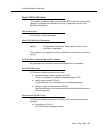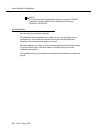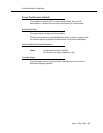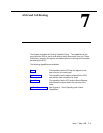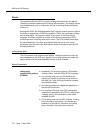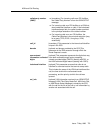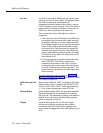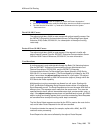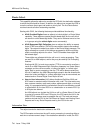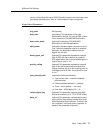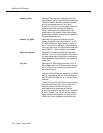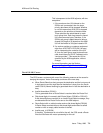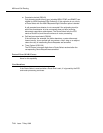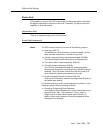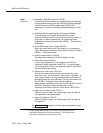
ASAI and Call Routing
Issue 7 May 1998
7-5
Denial (NAK) Causes
The adjunct might deny (NAK) a route request with adjunct-specific causes. See
the
DEFINITY Enterprise Communications Server Call Vectoring/Expert Agent
Selection (EAS) Guide
, 555-230-521, for a description of the adjunct routing
vector step.
Protocol Error (NAK) Causes
The adjunct might deny (NAK) a route request, if the request is invalid, with
adjunct-specific causes. See the
DEFINITY Enterprise Communications Server
CallVisor ASAI Protocol Reference
, 555-230-221, for more information.
Considerations
A routing request is only administrable through the Basic Call Vectoring feature.
[See the
DEFINITY Enterprise Communications Server Administration and
Feature Descriptions
, 555-230-522, and the
DEFINITY Enterprise
Communications Server Call Vectoring/Expert Agent Selection (EAS) Guide
,
555-230-521, for more information.] The Route capability is initiated by the ECS
when it encounters the adjunct routing command in a call vector. This adjunct
routing command specifies an ASAI link’s extension (adjunct) through which the
ECS sends the Route capability.
Multiple adjunct routing commands are allowed in a call vector. Starting with
G3v3, the Multiple Outstanding Route Requests feature allows 16 outstanding
Route Requests per call. The Route Requests can be over the same ASAI links or
different ones. The requests are all made from the same vector. They must be
specified back-to-back, without intermediate steps (wait, announcement, goto, or
stop). If the adjunct routing commands are not specified back-to-back, pre-G3V3
adjunct routing functionality applies (that is, previous outstanding Route Requests
are cancelled when an adjunct routing vector step is executed).
The first Route Select response received by the ECS is used as the route for the
call, and all other Route Requests for the call are cancelled.
If the adjunct denies the request (for example, replies with a NAK), the ECS
continues vector processing.
Event Reports for calls are not affected by the adjunct Route Request.
1. See ‘‘Event Reports’’ Section in Chapter 12, ‘‘ASAI and Feature Interactions.’’
2. If the ECS is administered to modify the DNIS digits, then the true DNIS is not passed.
3. The field “Send UCID to ASAI” = y needs to be administered on the System
Parameters form.



